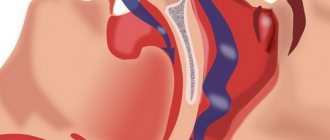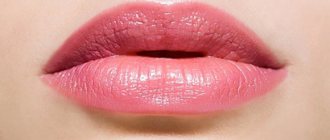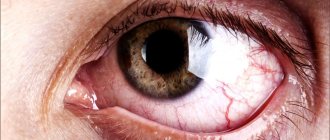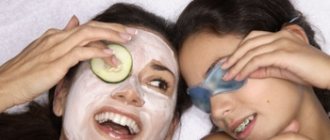Tea
One of the most famous and common remedies to help get rid of red eyes is regular black tea. You can use cotton pads or tea bags soaked in strong tea leaves. They should be slightly warm and, of course, fresh.
To remove redness, lie down comfortably, place bags or discs on your eyes and leave for 10-15 minutes.
You can do this procedure 1-2 times a day. The beneficial substances contained in black tea help cope with inflammation, and in addition, such compresses allow the eyes to rest.
The eye is watery and hurts: what to do - treatment
If your eyes hurt and water for more than an hour, then you need to consult an ophthalmologist. After the examination, the doctor will be able to identify the cause of the disease and prescribe the appropriate treatment.
The most effective medications for tearing and eye pain are:
1. Tetracycline ointment
. It has a pronounced bacteriological effect. It is prescribed for various bacterial infections, eye injuries, conjunctivitis and trachoma.
This ointment should be used three times a day. To do this, it must be applied to a sterile bandage and applied to the eye (sometimes the ointment itself can be placed behind the eyelid).
2. Hydrocortisone
is a drug that has an anti-edematous and anti-inflammatory therapeutic effect. It can be used for eye burns, blepharitis, ophthalmic diseases and conjunctivitis.
3. Erythromycion ointment
has an antibacterial healing effect. It stops the synthesis of proteins, due to which the eye infection is quickly suppressed.
This ointment should be applied to the sore eyelid. Repeat the procedure up to four times a day. Duration of treatment: from three to seven days. If necessary, the attending physician can extend the course of treatment for another 2-3 days.
In addition, it is important to know that erythromycin ointment rarely causes side effects, the zone is not toxic, so it can be used in pediatric practice to treat young children.
4. Korneregel
. This drug stimulates the repair of eye tissue and also restores damaged cornea. It can be used both to treat eye diseases and to prevent their occurrence.
In more severe cases, when tearing is accompanied by fever and eye pain, the patient may be prescribed antibacterial drugs for oral or intramuscular administration. They will help cope with inflammation and suppress infection activity.
Aloe
Aloe juice will help tired and red eyes. This plant is found in almost every home. It is famous for its healing properties and helps fight various problems, including ophthalmological ones. To help your eyes:
- grate a sprig of the plant;
- Place the resulting mixture on a gauze pad and place this compress on your eyes.
For an aloe compress, it is better to use gauze rather than cotton swabs, since the latter absorb a lot of moisture.
For red eyes, aloe juice can be instilled into the eyes - 1-2 drops twice a day.
Only fresh juice should be used. Under no circumstances should such a product be stored.
Chamomile
Chamomile is an effective remedy for eye problems. This plant is considered a natural antiseptic, so it will help eliminate infections, if any, and also help eliminate fatigue and redness of the eyes. A compress is made from chamomile infusion as follows:
- Pour 2 tablespoons of dry herb into 200 ml of boiling water;
- leave the product to infuse for an hour, and then strain the cooled solution;
- Soak cotton pads in the resulting chamomile infusion and place them on your eyes for 15-20 minutes.
The prepared solution can be stored in the refrigerator for 2-3 days. It should be reheated to keep it warm before use.
Vascular diseases
Due to ischemia, the blood supply to the eye may be impaired. This information is worth knowing for anyone who wonders why their eyes hurt after sleep and during the day. This pathology can be detected using ultrasound. For qualified treatment, you should contact a specialist in cardiology and an ophthalmologist.
Coronary artery disease should be taken as seriously as possible, since it is a chronic disease and is treated comprehensively over many months.
Water treatments
Another effective remedy for combating red eyes is a simple procedure that requires plain water.
- Pour purified water into a small plate.
- Lean over the bowl and, placing your palms in the water, begin to splash water on your face. Your eyes should be kept open.
- The procedure takes about 1 minute.
This technique improves blood circulation in the eyes, which greatly contributes to their health. The procedure must be performed daily for a month. This will not bring immediate results, but within a week you will notice significant improvements in the condition of your eyes.
You need to use only purified water - filtered or boiled and settled. Tap water cannot be used for these manipulations, since the chlorine and other impurities it contains can lead to completely the opposite result.
The whites of the eyes are usually white, but if something is wrong, the capillaries (small vessels) in the eye fill with blood, causing it to turn red.
Red eyes are a common problem that can be caused by either fatigue or serious illness. Therefore, if there is redness, it is important to consult a doctor. Let's see how to remove red eyes.
Causes of red eyes
There are many reasons why the eyes become inflamed and red. The most common redness factors are as follows.
- Fatigue. Redness of the eye appears due to prolonged viewing of a computer monitor, TV screen, or reading. Redness of the eyes often accompanies itching.
- Allergy. Allergic redness of the eyes is present along with a runny nose, itching, and burning.
- A foreign body in the eye also causes redness and swelling.
- Inflammation of the eye, which contributes to redness, can develop after injury, damage, or bruising of the eyeballs.
- Conjunctivitis. Itching, irritation, redness of the eyes are present in combination with swelling of the eyelids, pain, and tearing. Sometimes with conjunctivitis, purulent secretion is present - a sign of a bacterial infection.
- Dry eye syndrome. In addition to redness of the eyes, discomfort is accompanied by an unpleasant burning sensation, dry eyes, fatigue, blurred vision, and sometimes headache. Redness is caused by insufficient production or faster evaporation of tears, a disruption of the tear film.
- Increased intraocular pressure or an attack of glaucoma. These diseases cause redness of the eyes, blurred vision, pain, pressure in the eyes, and headaches. With such redness, medical attention is needed.
- Inflammation of the iris. With this disease, the eyes become red, there is pain in the eye, and visual disturbances occur.
- Redness caused by bleeding under the conjunctiva due to broken capillaries. This can happen when there is high blood pressure in the head area, for example, during severe coughing, vomiting, or childbirth. Sometimes this condition occurs after alcohol (drinking large amounts of alcohol).
- Often the eyes become reddened with sinusitis.
- Redness under and in the eyes is a major sign of lack of sleep (as are bruises under the eyes).
- One common cause of red eyes is the use of unsuitable contact lenses.
Important! By the way, why do you dream about red eyes? If you see another person blushing, this warns of a possible offense caused to you. If you have red eyes, you should be careful in assessing what is happening.
The main reasons why your head and eyes hurt at the same time
There can be many reasons why you have a headache and it is painful to move your eyes. It is possible that the malaise is a consequence of spending a long time in a stuffy room or working at a computer for a long time. In this case, the discomfort goes away quickly if you rest a little and go out into the fresh air.
There are also more serious reasons. If your head hurts for a long time and there is pressure in the eye area, in the back of the head, movements of the pupils are painful, the nature of the pain is pulsating, you should undergo an examination. The probable causes of pain are presented below.
Meningitis
Headache is the leading symptom in infectious and inflammatory diseases. Meningitis, an inflammation of the lining of the brain, is especially dangerous.
How to remove redness from the eyes and the correct choice of drops
There are a large number of different eye drops for redness in pharmacies. Some eliminate eye fatigue, others treat the redness itself, the following help get rid of conjunctivitis. It’s easy to get lost in the endless supply of medications for redness. Therefore, before going to the pharmacy, you should always know the cause of red eyes.
Artificial tears for eyes
Probably everyone has experienced a burning sensation, tingling, or redness in the eyes after working at the computer for a long time. Redness, in addition to the computer, appears due to exposure to the sun and wind. Excessive eye strain leads to fatigue, disruption of the tear film, and redness. The main option to get rid of red eyes is drops known as artificial tears. They are available without a prescription. If you cannot remove redness from your eyes, you may need to use anti-redness ointments or gels.
Attention! Artificial tears are the best treatment option during pregnancy.
Medicines for red eyes
This group includes eye drops for redness, which specifically eliminate redness and constrict blood vessels. These eye medications for redness are also available over the counter, but they have many more unwanted effects than the previous group that treats redness:
- vasoconstriction eliminates redness, but leads to dryness and irritation of the eyes;
- substances contained in the products dilate the pupil, which leads to photophobia;
- with prolonged use their effect disappears, after stopping use the eyes become even more inflamed and redness appears again;
- These drops solve the problem of how to get rid of red eyes, but the reason may lie in a serious illness.
Treatment of allergies and eye infections
Allergies cause conjunctivitis, which manifests itself as redness, itching, and burning in the eyes. In these cases, drops containing antihistamines are used against redness.
Eye inflammation caused by viruses and bacteria is characterized by the appearance of an expressive vascular pattern on the conjunctiva (redness). In addition, other symptoms are added: pain, burning, proliferation of the eyes. If there is purulent secretion along with redness, we are talking about a bacterial infection in the eye.
Important! Redness due to infectious inflammation requires consultation with a doctor, who will advise appropriate treatment and select the appropriate way to quickly relieve swelling and swelling of the eyes.
For less severe conditions of redness, you can use over-the-counter drops that have an antiseptic effect.
Choosing the right medications for redness and putting eye drops correctly are very important health factors. If you are unsure what is causing your red eyes - dry eye syndrome, allergies, infection - consult your doctor before starting to eliminate the redness. Using bad drops can cause even more redness.
Why do your eyes itch and what to do about it?
Ophthalmic surgeon Alexander Kulik advises calling an ambulance or going to an ophthalmologist as quickly as possible if itching in the eyes is accompanied by one of these signs:
- sudden loss of vision or sharp deterioration during the day;
- loss of half of the visual field or the appearance of a dark spot in front of one eye or both at once.
These symptoms may indicate not only dangerous eye diseases, but also diseases of the brain and nervous system.
Alexander Kulik, ophthalmologist-surgeon, candidate of medical sciences, highly qualified doctor, consultant of the Teledoctor-24 service
Also see a doctor immediately if you injure your eye.
Why do my eyes itch?
Here are the main eight reasons.
Allergy
Occurs as a response of the immune system to foreign substances. Most often, the eyes itch due to seasonal allergies caused by plant pollen. There are other reasons: dust, pets, insects, food, medications and other chemicals.
As a result, the eyelids and conjunctiva (the membrane lining the eyelids and part of the eyeball) become swollen, red and itchy. At the same time, your eyes water and you feel a burning sensation. Sneezing and runny nose also occur.
What to do
Contact an ophthalmologist or allergist to be prescribed antiallergic medications. To avoid unpleasant symptoms, try not to come into contact with the irritant:
- Keep windows closed during the flowering period and try not to go outside.
- Don't eat foods that cause allergies.
- Do wet cleaning as often as possible.
- If allergies are caused by pets, walk them several times a day. Avoid touching them and wash your hands after each contact.
Air pollutants
Some people are sensitive to smoke, exhaust fumes, dust, or even certain perfumes. Pollutants cause irritation upon contact with the mucous membranes of the eyes, causing them to water, itch, and burn.
Conjunctivitis
This inflammation of the conjunctiva is caused by viral or bacterial infections, chemicals or foreign objects. With conjunctivitis, the eyes are red, itchy and watery, and it feels like sand has gotten under the eyelids. In the morning it is difficult to open them due to the sticky crusts.
Red eyes due to conjunctivitis / health.com
Dry eye syndrome
The disease occurs due to a lack of tears, which moisturize and nourish the cornea, so the eyes become red, itchy and you feel a burning sensation. Viscous mucus accumulates under the eyelids, it seems that a speck has gotten under them, and it is unpleasant for a person to look at the light. Vision often deteriorates.
Dry eye syndrome occurs if:
- few tears are produced, for example, after laser surgery or taking hormonal medications, as well as with diabetes and other diseases;
- tears evaporate too quickly: when working at the computer, when turning or turning in the eyelids;
- There are factors such as wind, smoke, dry air.
Visual fatigue syndrome
The organs of vision get tired due to prolonged and intense stress - when reading or working at the computer. In addition to itching, pain and burning in the eyes, a person complains of double vision, fear of light, pain in the head, neck or shoulders.
Contact lenses
If you wear them continuously or do not properly care for them, it can lead to papillary conjunctivitis. The eyes become red, watery and itchy.
Blepharitis
This is an inflammation of the eyelids that usually appears at the edge of the eyelids, where the eyelashes and sebaceous glands are located.
The disease has many causes: blockage of the sebaceous glands, allergies, bacterial infections, eyelash mites and even dandruff. Eyes with blepharitis are red and swollen, itchy, watery, and there is a burning sensation.
A person is afraid of bright light; it seems as if sand has gotten under his eyelids. Eyelashes stick together in the morning and fall out easily.
Blepharitis does not impair vision, but it is quite difficult to treat, and it often becomes chronic and causes complications: conjunctivitis, styes, corneal ulcers or scars on the eyelids.
Eye with blepharitis / betanclinics.nl
Barley
This is an inflammation of the sebaceous gland at the edge of the eyelid, similar to a boil or pimple with a white point of pus in the center. The disease is caused by bacteria that enter the eye with unwashed hands or contact lenses. In addition to itching, the person complains of pain and swelling of the eyelid, and watery eyes. Stye does not affect vision and usually goes away on its own.
Eye with stye / babycenter.com/
How to get rid of redness in the eyes at home
What to do if your eye is very red, how to get rid of the discomfort? Determining the correct eye treatment method is based on the specific cause of the redness. But the following folk methods will help relieve pain and redness in the eyes caused by any disease (the cause should be treated at the same time).
How to remove red eyes with warm compresses
Soak a clean towel in warm water and wring it out lightly. Keep the temperature at a reasonable level (the water should not be very hot). At high temperatures there is a risk of irritation of the mucous membranes and skin. Apply the compress to closed red eyes for 10 minutes. Heat helps increase blood flow to the eye area. You can use both clean water and herbal infusions, such as chamomile.
How to remove redness in the eyes with cold compresses
If warm compresses don't work for red eyes, try the opposite approach. Soak a towel in cold water and apply to the red eye area. This method will reduce redness, swelling, and relieve itching.
It's also important to watch out for extreme temperatures here. Instead of a towel, several layers of gauze or cotton pads will do for red eyes.
Types of illness
Pain in the eyeballs is often combined with unpleasant sensations in the head. Experts distinguish 2 main types:
- the pain begins in the eyes and gradually moves to the head. For example, double vision is observed in the optic nerve, and then the temporal region begins to suffer;
- the attack begins inside the head, spreading to the eyelid area. An example is a migraine attack: discomfort on the left side of the head radiates to the left eye.
When determining the cause, it is important to consider associated symptoms.
My eyes are watering
This is accompanied by painful sensations in the head and eyes, one may suspect:
- computer fatigue. The eyes begin to hurt and water, become red;
- wearing the wrong contact lenses or wearing them for longer than recommended;
- allergic reactions. In addition to pain and tearing, it is accompanied by a runny nose, rashes on the body, and sneezing;
- infectious diseases. In such cases, inflammation begins in one eye and then gradually moves to the other;
- weathering. Pain around the eye and watery eyes can be caused by windy weather or being near a fan or air conditioner.
With temperature
The pain at high temperatures is not sharp or cutting, but rather pressing, similar to muscle fatigue. With these symptoms, eye diseases can be ruled out.
The most common reason for body aches and burning eyelids is ARVI or influenza. A typical viral infection can cause high fever, which causes discomfort.
Red eyes
A common phenomenon in women, men, and children. There could be a lot of reasons:
- red squirrels: overwork or fatigue, allergies, vitamin deficiency, diabetes, anemia, chronic infections, gastrointestinal pathologies;
- only one eye is red: conjunctivitis, blepharitis, glaucoma, corneal ulcer;
- redness and blood from the nose: increased intracranial pressure, vascular weakness;
- red with yellowness: chronic lack of sleep, fatigue, liver disease, biliary tract diseases, viral hepatitis;
- redness of the iris: injury, vitamin deficiency, infection;
- redness and discharge of pus: a sign of conjunctivitis or dacryocystitis - a disease of the lacrimal canal, often diagnosed in a child;
- red eyes and itching: eyes itch with allergic conjunctivitis.
It hurts to look at the light
If your eye sockets hurt from light, it could be:
- spending a long time watching TV or computer;
- side effects of some medications;
- high levels of radiation;
- migraine attack;
- cold or flu;
- inflammation of the cornea, iris;
- glaucoma;
- conjunctivitis;
- brain or eye tumor.
With nausea
If you feel a throbbing pain in your head that radiates to your eye, it is most likely a migraine attack. You can also feel sick with osteochondrosis and simple fatigue.
In some cases, cervical osteochondrosis leads to increased blood pressure, which further aggravates the symptoms.
Eye pressure
A persistent increase in intraocular pressure occurs with glaucoma.
Periodically, it can increase under the influence of certain factors: taking medications, endocrine disorders. In this case, it is important to eliminate the cause that caused the pain in the head and heaviness in the eyes.
How to get rid of redness in the eyes using medications
To solve the problem of how to relieve red eyes, both over-the-counter and prescription medications are used.
Prescription eye medications
These medications are prescribed by an ophthalmologist in accordance with the cause of eye redness, mainly in adults. The ophthalmologist also determines the dosage of the drug for redness.
Over-the-counter eye medications
Eye drops for redness, which do not require a doctor's prescription, are used 3-6 times a day. If redness from the eyes cannot be completely eliminated within 3 days, visit a doctor!
How do the best eye redness drops work?
Such drugs are developed on the basis of components that cause a rapid vasoconstrictor effect (for example, in Iridine it is naphazoline). The remaining components enhance the effect and can solve “related” problems. This:
- moisturizing the mucous membrane;
- reducing inflammation of the conjunctiva;
- improvement of blood microcirculation (in capillaries);
- strengthening the walls of blood vessels;
- disinfection.
For example, chamomile or sage play the role of an anti-inflammatory agent, calamus, witch hazel, horse chestnut - strengthening, and hydrochloride - disinfectant. Of course, you cannot constantly instill eye drops: this will cause an overdose. But if you strictly follow the instructions, everything will be fine.
Please note that before using ANY ophthalmic drug, you should consult a specialist. For some diseases, even the safest eye drops cannot be used.
We remind you that on our website you can purchase the best drops for fatigue and redness from Italy: buy Iridina eye drops.
How to remove redness from the eyes with homemade masks
You can relieve red eyes at home (provided there is no serious illness causing the symptom). For example, the following methods will help with eye strain, red eyes after an impact. How to treat the problem using remedies from your home arsenal?
Use cucumber for red eyes
Chill the cucumber in the refrigerator and cut 2 medium-thick slices. Lie down, close your red eyes, place cucumber slices on them, leave to act for 5 minutes.
The procedure can be repeated several times, with other cucumber slices. They must be fresh and cold. Then rinse your eyes with cold water, and the redness and swelling will decrease significantly.
Milk will help with red eyes
Cool the milk in the refrigerator. Soak 2 cotton pads and squeeze lightly. Use as you would with cucumber. Apply to red eyes for 5 minutes. The procedure can also be repeated, but at the end, rinse your eyes with warm water.
This method not only combats existing eye redness but also prevents redness and swelling of the eyes.
Try strawberries for red eyes
Strawberries are a delicious berry that is included in the diet of healthy eating enthusiasts and helps to lose excess weight. But it is also a fruit that is useful for red eyes. As in the previous procedures, it is good to leave the strawberries to cool in the refrigerator. Then you can use 3 possible methods to help get rid of red eyes. For example:
- apply strawberries to red eyes;
- Massage the area around the red eyes with the cut berry;
- moisten cosmetic discs with strawberry juice and apply to eyes for 10 minutes.
In addition to eliminating eye redness, all 3 procedures will help maintain beauty. Strawberries have expressive antioxidant properties.
Brew tea against red eyes
What is necessary for beauty always and in all directions? This is a sufficient amount of liquid. And if we're talking about quality tea that also has antioxidant properties, you'll get the bonus of positive health benefits, particularly on red eyes. Although experts recommend loose tea, a bagged product is better for combating red eyes. Do not throw away used tea bags; put them in the refrigerator for several hours. Once they are cool enough, use them in the same way as cucumber or strawberries - apply to red eyes, leave to work for about 5 minutes. This method helps fight both redness and puffiness of the eyes. The procedure can be repeated several times - after use, return the sachets to the refrigerator and reuse them after a few hours.
Measures to prevent redness in the eye
To prevent redness, follow some guidelines:
- avoid eye strain;
- sit further away from the monitor;
- read in good lighting;
- wear sunglasses;
- limit your exposure to dusty, polluted environments;
- Provide yourself with a diet rich in vitamins A and B2, which help improve eye health.
You should immediately consult a doctor if you are injured, your eye hurts, or sudden vision loss occurs, and over-the-counter eye drops do not help.
Redness of the eyes can lead to a significant deterioration in appearance and even a decrease in visual acuity
.
For many people, this condition causes serious discomfort.
The reason for this phenomenon is the dilation of blood vessels in the sclera. Sometimes bloody spots appear in the area of the white membrane, which indicates subconjunctival hemorrhages.
Folk remedies for red eyes can cope with this problem and improve vision.
Treatment for red eyes - with medications and traditional medicine
First of all, treatment should begin with establishing the cause of the disease and diagnosis. It is better and safer to entrust this to a specialist doctor, who will prescribe the most optimal general (tablets, injections) or local (gels, ointments, drops) treatment. After some time, an objective assessment of the treatment and recovery process is necessary.
For eye redness, it is more convenient to resort to local treatment in the form of drops, gels, and ointments. There are quite a lot of them in pharmacies, they are all different in properties, composition and indications.
List of the most popular eye drops:
- Visine. Recommended for use for dry eye problems. Within a couple of minutes after instillation, relief is felt: the redness goes away. This drug is not suitable for systematic use as it is addictive.
- Octilia. The drops relieve redness, relieve burning and itching, and significantly reduce lacrimation. They are vasoconstrictors.
- Alomide. Antiallergic drops have an anti-inflammatory effect.
- Naphthyzin. The drug has a rapid vasoconstrictor effect. Copes well with inflammation, helps with minor injuries.
- Visomitin. Has a positive effect on dry eyes and eye fatigue. Eliminates the cause of redness.
- Taufon. Drops used for dystrophic and age-related changes in the tissues of the eye.
Only a doctor can prescribe medication; you cannot do it on your own.
A few simple folk recipes for red eyes:
- Milk compress. Two cotton pads are dipped in milk and placed on the eyelids. Keep for 15 minutes. The eyes will look rested, the look will become clear.
- Dill seeds. A spoonful of seeds is poured with boiling water (250 milliliters). Leave to infuse for 40 minutes. The product is thoroughly filtered and used for lotions.
- Honey drops. A drop of natural honey is diluted in a tablespoon of boiled water. After complete dissolution, 2 drops are instilled into each eye. This method cannot be used if you are allergic to bee products.
- Aloe drops. 2-3 drops are instilled into each eye. You can only use a plant that is more than 2 years old. Aloe juice is also sold in pharmacies.
- Pumpkin lotions. The product is cleaned and grated. The resulting mixture is placed in a clean (sterile) napkin and applied to the affected areas for 20 minutes. the procedure can be repeated after 10-15 minutes.
You need to be extremely careful with traditional methods. It is better to consult a doctor and not self-medicate. It is also not recommended to buy drugs at a pharmacy based on advertising on TV.
Causes
Before treating red eyes, it is necessary to establish the causes of this problem. This condition occurs under the influence of various factors.
The most common of them include the following:
- exposure to sunlight;
- traumatic eye injuries;
- fatigue after prolonged work at the computer;
- ingress of coarse dust onto mucous membranes;
- penetration of a foreign object into the eyes;
- allergic reactions - in this situation, there is redness and itching around and in the corners of the eyes.
In a child, problems may be caused by prolonged crying or mechanical friction.
.
In any case, all these factors can be easily eliminated. Answering the question of how to get rid of red eyes, in this situation it is recommended to use various lotions and masks.
But in some cases, redness and dryness are caused by serious inflammatory processes. What to do in such a situation? First of all, you need to establish the causes of the problems.
These include the following:
- blepharitis
- inflammatory damage to the eyelash follicles caused by the activity of skin bacteria; - conjunctivitis
- inflammation of the mucous membrane of the eyes of viral origin; - ulcerative lesion of the cornea of the eye
; - exacerbation of glaucoma
.
These pathologies are characterized by pain, pain and burning in the eyes. It is impossible to cope with such an illness on your own.
Therefore, such manifestations should be a reason for urgent contact with a specialist.
Many people are interested in how to remove red eyes at home. For this purpose, effective folk recipes are used that can solve such problems:
Folk remedies can be used only after consulting an ophthalmologist. If the cause of redness is a serious illness, such recipes can only worsen the situation.
When answering the question of how to relieve redness of the eyes, one cannot help but recommend special gymnastics. If you do these exercises every day, you can cope with fatigue and improve your vision:
To cope with the problem, you need to follow these recommendations:
- eat foods containing carotene - this substance is present in carrots and bell peppers;
- eat parsley, spinach, blueberries;
- have a good rest;
- maintain a sufficient level of humidity;
- do eye exercises;
- choose a safe font while working at the computer.
Folk remedies help cope with red eyes if the problem is caused by increased fatigue or allergies. If you have serious pathologies, you should consult a doctor.
Each of us at least once in our lives has encountered the discomfort associated with red eyes. An unpleasant sensation may be associated with weather conditions, lack of sleep, and sometimes the reason lies in serious ophthalmological pathologies.
Redness, or, as doctors say, “hyperemia,” is caused by dilation of the blood vessels that cover the surface of the eyeball. Normally, such vessels are usually invisible.
Hyperemia is often accompanied by cutting pain, dryness, itching, pain, swelling of the eyelids, blurred vision, and pathological discharge. In some cases, redness goes away on its own after rest or sleep, and sometimes the problem can only be solved with the help of medications. In this article we will talk about the most effective methods that will help quickly remove eye redness.
If redness does not cause discomfort to a person and does not interfere with his life, then you can do nothing and take a wait-and-see approach. If hyperemia is accompanied by the appearance of unpleasant symptoms and bothers you for a long time, you should consult a specialist.
Therapeutic tactics are selected depending on the underlying cause. A qualified ophthalmologist will be able to identify the risk factor in your case after an examination.
Red eyes can be a result of irritation from cool air, wind, or tobacco smoke. An allergy to animal hair, fluff, pollen or decorative cosmetics can provoke hyperemia. Spending a long time in front of a computer or TV, stressful situations, wear of contact lenses, colds, chronic fatigue - all this and much more can cause visual dysfunction.
Some treatments can be done at home. More serious medical procedures will have to be carried out under the supervision of a doctor. If the cause of hyperemia is lack of sleep or excessive fatigue, then the treatment program should include proper rest of the visual system. You need to sleep at least eight hours a day.
If you spend a long time in front of the computer, periodically give your eyes a little rest. During a break, you can do gymnastics to relax the extraocular muscles.
If you have an allergic reaction to cosmetics, you will have to discard them during treatment. If you use lenses, you should always remove them while you sleep. When redness is accompanied by a feeling of dryness, it is better to use moisturizing drops.
If any chemical gets into your eye and causes redness, quickly rinse it under running water and consult a doctor. Particular attention should be paid to redness, accompanied by blurred vision and pain. Self-medication in such cases is unacceptable, as you can harm yourself even more.
It is imperative to consult a doctor in the following cases:
- penetrating wound;
- the appearance of headache, nausea, vomiting, photophobia, blurred vision;
- the appearance of a halo when looking at the light source;
- redness does not go away within 24 hours;
- entry of a foreign body;
- the appearance of yellow or green discharge from the eye.
conclusions
Self-treatment of red eyes is only permissible if there are no associated symptoms. Redness may appear against the background of a sharp change in temperature (for example, when visiting a bathhouse), under the influence of tobacco smoke or wind, or when dust gets into the eyes. The eyes turn red due to increased body temperature and allergic reactions of the body, from lack of sleep.
In all these cases, no special treatment is required; you can try to remove the redness using the gentle folk methods listed above and special eye drops. However, it is important to monitor the dynamics of redness and consult a doctor if the redness does not go away for a long time or becomes more intense.
If redness is accompanied by itching, swelling, pain and burning, discharge, lacrimation and other associated symptoms, you need to visit an ophthalmologist as quickly as possible!
In order to prevent redness of vision, it is necessary to carefully monitor eye hygiene, use only high-quality cosmetics, ensure proper and long sleep, and also follow all the rules for using contact lenses.
Medications
It is permissible to use medications only after consulting a specialist. Drops belonging to various groups of medicines will help remove redness of the eyes:
- antibacterial. Used for pathologies caused by bacteria. Antibiotic drops have a bacteriostatic and bactericidal effect, that is, they not only prevent the proliferation of pathogens, but also cause their complete death;
- antivirals fight viral infection;
- antiallergic relieve irritation caused by increased sensitivity of the body to some substance;
- anti-inflammatory;
- moisturizers relieve redness and dryness caused by dry eye syndrome;
- Vasoconstrictors eliminate hyperemia and inflammation.
Even if the cause of eye redness is known, the drug should be prescribed by a specialist
Anti-inflammatory
They, in turn, are divided into glucocorticoids, which perform the functions of endocrine glands, and non-steroidal drugs. Used for acute and chronic inflammatory reactions on the organs of vision. Let's talk about the most popular drugs, including the following:
- Dexamethasone. It is a glucocorticosteroid with anti-inflammatory and antihistamine effects. Often used for diseases such as conjunctivitis, blepharitis, keratitis,
- Diclofenac. The drug is a non-steroidal drug based on phenylacetic acid. In addition to relieving inflammation, the active substance has local anesthetic properties. Regular use helps relieve swelling. Diclofenac is usually prescribed for ophthalmological diseases of infectious origin.
- Indocollier. The active ingredient is indomethacin. Drops are often prescribed for secondary inflammatory processes that occur after surgery.
- Tobradex. This is a combination product that includes antibacterial and glucocorticosteroid substances.
Antiviral
They are used if conjunctival hyperemia is caused by a viral infection. This group of drugs has a double effect: they stimulate the body’s defenses and neutralize the pathogen. Let's look at some antiviral eye drops:
- Oftalmoferon. The drug not only relieves inflammation, but also helps restore the cornea, and also prevents the further spread of pathogens. Oftalmoferon has a slight anesthetic effect.
- Aktipol. It contains aminobenzoic acid. The product promotes the body's production of interferon. Aktipol can be used as an anti-inflammatory and moisturizing agent.
- Poludan. Doctors often prescribe the drug for herpetic and adenoviral infections. The active substance actively stimulates the synthesis of interferon, due to which the body begins to stubbornly resist viruses.
- Oftan I'm coming. These are potent eye drops that act on pathogenic microflora at the DNA level. The active component is capable of changing the structure of the genetic material of the pathogen, which leads to its inevitable death.
Antibacterial
For bacterial infections, you cannot do without eye drops with an antibiotic. Antibacterial agents not only eliminate the very cause of the pathology, but also effectively relieve unpleasant clinical symptoms, fighting irritation and hyperemia. Tsipromed is very popular. Drops are based on ciprofloxacin. Prohibited for use by children under one year of age, pregnant women and breastfeeding women.
IMPORTANT! Albucid can be used to treat children, including newborns.
Levomycetin drops have a pronounced bacteriostatic property. The product is available to the general consumer as it is inexpensive. Another well-known remedy is Albucid. The active substance is a sulfonamide derivative. The product is quickly absorbed into the mucous membrane, providing a therapeutic effect. Albucid is used in the treatment of newborns.
Vasoconstrictors
If you need to get your eyes in order as soon as possible, vasoconstrictor drops will come to the rescue. They are available without a prescription and are relatively inexpensive. However, it should be understood that such drugs can be addictive.
The following medications will help get rid of redness:
- Visine. Drops quickly relieve swelling, fatigue and redness. Therapeutic therapy should not last more than four days, as the drug can be addictive.
- Octilia. This is a drug that has a mild effect on the visual apparatus. The therapeutic effect is observed within a few minutes after installation.
ATTENTION! Overuse of vasoconstrictor eye drops leads to thinning of the capillaries.
Antihistamines
Antihistamine drops will help relieve redness caused by allergies. A representative of this group is Ketotifen. Drops are prescribed for allergic conjunctivitis and keratitis. The product not only eliminates unpleasant symptoms, but also fights the very cause of increased sensitivity. Ketotifen should not be used in the treatment of children under twelve years of age, pregnant or nursing mothers.
Lecrolin is a powerful antiallergic drug, the effect of which is due to the presence of cromoglycic acid. The drops have a cumulative effect, which occurs approximately one week after the start of use. Doctors prescribe Lecrolin to people with seasonal allergies. It is recommended to begin treatment several days before likely contact with the allergen.
Another effective antiallergic drug is Azelastine. About ten minutes after use, discomfort in the eyes disappears. The therapeutic effect lasts for twelve hours. Azelastine is approved for children over four years of age.
Azelastine will remove reddish eye color caused by an allergic reaction
Moisturizing
Red eyes can be a result of visual fatigue or dry eye syndrome. In this case, moisturizing drops will be indispensable. Let's consider popular drugs from this group:
- Systane. The drops effectively eliminate burning, dryness, pain, and irritation that arise due to insufficient production of tear fluid. Systane creates a film on the surface of the mucous membrane that prevents evaporation of liquid and also protects the eye from dirt and dust. The drug is suitable for long-term use and does not cause side effects. The only contraindication to its use is individual intolerance to the active ingredients.
- Natural tear. Drops protect the mucous membrane of the eye from harmful influences, moisturize the cornea and relieve fatigue. The huge disadvantage of this remedy is that the therapeutic effect lasts only for one hour. Natural tears are prescribed to people who wear contact lenses and work at a computer.
- Vidisik. The therapeutic effect is based on the presence of carbomer in the composition. The substance forms a film and retains moisture. To eliminate irritation, you need to drip one drop every two to three hours. Vidisik is prescribed even if the cornea is damaged, as it promotes its regeneration.
Redness from lenses
Wearing contact lenses is very popular now. Redness of the eyes due to them is not uncommon.
There are several reasons for this:
- Allergy. May occur on the solution in which the lenses are stored.
- Inflammatory process of conjunctivitis. The problem occurs due to infection entering the eye.
- Keratitis. The disease develops after the lenses have been selected incorrectly.
- Sensitive cornea of the eye. This problem occurs more often in females.
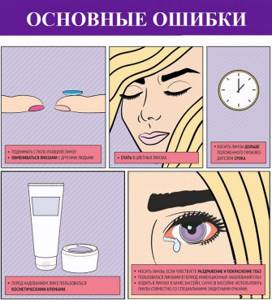
People who use contact lenses should use the following medications:
- Taufon (4%). If the eye was injured (by a speck, by a hand while putting on a lens), the product will speed up healing. Also good for age-related changes.
- Korneregel. Accelerates the regeneration of damaged mucous membrane and conjunctival tissue. The gel base is easily distributed over the eye shell.
- Emoxipine (1%). Corneal protection when wearing contact lenses. Recommended for people who use soft contact lenses to improve blood supply to the eyes.
- Visine. If wearing lenses causes redness of the eyes, you can use Visin drops, as they replace the composition of tears, creating additional hydration.
Before using any products, lenses must be removed. And if possible, stop wearing them for a while.
